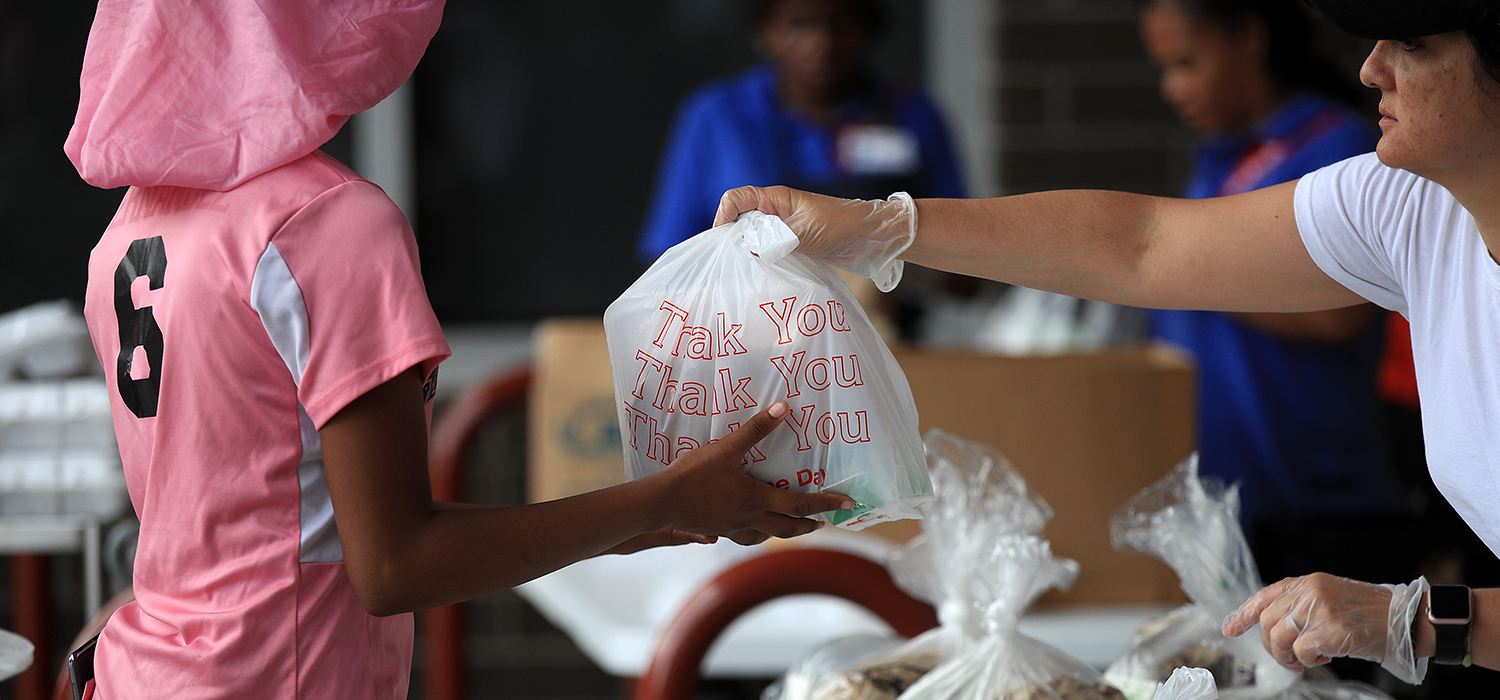
<p>Paul Habans Charter School hands out supplies including food, books and computers to students and the community as Louisiana schools close for one month due to the spread of coronavirus (COVID-19) on March 17, 2020 in New Orleans, Louisiana. (Photo by Chris Graythen/Getty Images)</p>
We are months away from understanding the profound consequences of the COVID-19 outbreak for the United States, but it is already clear that for families, communities, and health systems, the pandemic is exposing long-standing vulnerabilities.
Mitigating the spread of COVID-19 will require closing schools and businesses, but our lack of national policies to support paid sick leave and child care makes complying with this guidance difficult or impossible for millions of families. In addition, many Americans have limited cash on hand to cover rent or groceries when paychecks have stopped, and for the many low-income families that depend on school systems for their children’s meals, school closures also have nutritional implications.
Complicating this picture is the widespread failure in the United States to invest in public health, which has left local and state health departments ill-prepared to face the current crisis. Hospital systems are also challenged with current and projected shortages of key clinical staff and essential resources that predate the COVID-19 pandemic. And in rural communities, the number of hospitals has been in decline for several years, leaving many areas without needed health professionals and services.
Philanthropy, drawing on decades of experience responding to national crises (such as its response to September 11, 2001), can help address these vulnerabilities and support the health and recovery of our communities in the short and long term.
How funders are already helping communities affected by COVID-19
In California, Washington, and other states, funders have already launched emergency relief funds to support community-based organizations that serve vulnerable communities affected by the pandemic. In the Seattle area, Amazon’s Neighborhood Small Business Relief Fund will provide cash grants to small businesses needing assistance to get through economic challenges related to the pandemic. Throughout the country, the Ford Foundation’s grantee partners that receive project support have been given an opportunity to convert those grants to general support to respond to COVID-19.
These types of “rapid response” grants can be used to
- ensure frontline local organizations, such as food banks and shelters, have core emergency funds;
- distribute emergency funds to keep people housed and fed;
- expand shelter capacity and hours for the homeless;
- identify gaps in federal nutrition assistance response and provide support to address them, such as distributing food for homebound children;
- monitor homebound residents who are older or living with complex health conditions; and
- provide broadband or hotspots and laptops for students whose classes have gone virtual.
Steps for longer-term philanthropic solutions
In the longer term, funders can begin to address deeper, structural deficiencies that COVID-19 has revealed by taking the following steps:
- Build community resilience (PDF) to withstand, adapt to, and recover from adversity—whether it comes in the form of a pandemic or a natural disaster. This role is especially appropriate for local funders because of their deep knowledge and long-standing connections within their communities.
- Promote cross-sector collaboration, such as between education and public health officials.
- Support the strengthening of local public health systems, including mental health and drug addiction services. The de Beaumont Foundation’s Practical Playbook, which helps primary care and public health groups work together to improve health and reduce costs, is an example of this kind of effort.
- Use philanthropy’s convening power to create and strengthen local and national leadership to support collective action, such as the multistate, multifoundation Affordable Care Act Implementation Fund a decade ago.
The Bill & Melinda Gates Foundation, in partnership with Wellcome and Mastercard, has also made a significant investment into a therapeutics accelerator designed to identify, assess, develop, and scale-up COVID-19 treatments so national and global foundations can spearhead efficient wide-scale responses. After the coronavirus fallout eases and we prepare for the next pandemic, philanthropic support for analysis of the handling of the COVID-19 pandemic will also be essential to assess the accuracy of predictive modeling, effectiveness of mitigation efforts, and value of cross-national comparisons.
Philanthropy can’t do it alone
Philanthropy’s resources, although several billion dollars in the aggregate, are a drop in the bucket compared with those of the public sector. That’s why philanthropy can’t be a substitute (PDF) for an effective and assertive government response. Philanthropy can act quickly and in a targeted manner to respond to COVID-19, but it functions best as a complement to government funding and services. Fortunately, numerous examples of foundations and governments working together to meet public needs show how these entities can do so successfully.
Let’s build a future where everyone, everywhere has the opportunity and power to thrive
Urban is more determined than ever to partner with changemakers to unlock opportunities that give people across the country a fair shot at reaching their fullest potential. Invest in Urban to power this type of work.